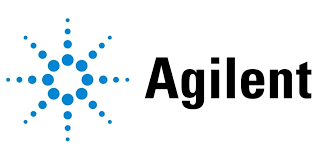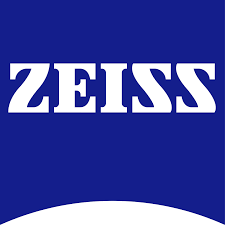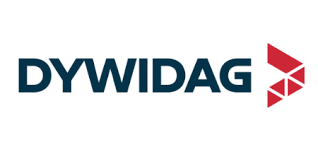Ai In Space Exploration
Published Date: 17 December 2025 | Report Code: ai-in-space-exploration
Ai In Space Exploration Market Size, Share, Industry Trends and Forecast to 2033
This comprehensive report on Ai In Space Exploration details the current market dynamics, evolving technological innovations, and critical segmentation across multiple sectors. Covering insights from 2024 to 2033, the report analyzes market size, growth trends, regional performance, and the cutting-edge applications driving the future of space exploration through artificial intelligence.
| Metric | Value |
|---|---|
| Study Period | 2024 - 2033 |
| 2024 Market Size | $3.00 Billion |
| CAGR (2024-2033) | 8.0% |
| 2033 Market Size | $6.13 Billion |
| Top Companies | SpaceX, Blue Origin, NASA, European Space Agency (ESA) |
| Last Modified Date | 17 December 2025 |
Ai In Space Exploration Market Overview
Customize Ai In Space Exploration market research report
- ✔ Get in-depth analysis of Ai In Space Exploration market size, growth, and forecasts.
- ✔ Understand Ai In Space Exploration's regional dynamics and industry-specific trends.
- ✔ Identify potential applications, end-user demand, and growth segments in Ai In Space Exploration
What is the Market Size & CAGR of Ai In Space Exploration market in 2024?
Ai In Space Exploration Industry Analysis
Ai In Space Exploration Market Segmentation and Scope
Tell us your focus area and get a customized research report.
Ai In Space Exploration Market Analysis Report by Region
Europe Ai In Space Exploration:
Europe exhibits a balanced growth pattern with market figures starting at 0.97 units in 2024 and expected to nearly double to 1.98 units by 2033. The continent's well-coordinated space programs, led by the European Space Agency along with numerous national agencies, prioritize AI integration to improve operational performance and risk management in space missions. Investments in smart satellite technology and advanced data processing underscore the region’s commitment to leveraging AI for space exploration.Asia Pacific Ai In Space Exploration:
In the Asia Pacific region, the market is projected to grow significantly, with 2024 values starting at approximately 0.57 units and reaching an estimated 1.16 units by 2033. This growth is driven by rapid technological adoption, increasing governmental investments, and a burgeoning private sector. Countries in East Asia lead the way with considerable strides in satellite launch capabilities and AI research, while emerging economies in Southeast Asia contribute to cost-effective innovation and partnerships.North America Ai In Space Exploration:
North America remains a pivotal region with a robust market presence in Ai In Space Exploration. Starting at approximately 1.02 units in 2024, the market is projected to grow to about 2.08 units by 2033. The region is characterized by high investment in R&D, a well-established framework for space exploration led by both governmental and private entities, and continuous innovation in AI-driven technologies that ensure mission reliability and efficiency.South America Ai In Space Exploration:
South America, though smaller in market size, demonstrates promising potential with initial market values around 0.04 units in 2024 and an expected increase to 0.08 units by 2033. The region benefits from concerted efforts to modernize space capabilities, enhanced collaboration with international space agencies, and a growing interest in utilizing AI to optimize resource extraction and environmental monitoring.Middle East & Africa Ai In Space Exploration:
The Middle East and Africa region, while representing a smaller slice of the global market, is rapidly evolving. With market values estimated at 0.40 units in 2024 and forecasted to climb to 0.82 units by 2033, the region is increasingly investing in space-related technologies. Strategic government initiatives and emerging private ventures are beginning to harness AI for improved satellite communication, surveillance, and environmental monitoring, thereby setting the stage for future growth despite initial market limitations.Tell us your focus area and get a customized research report.
Ai In Space Exploration Market Analysis By Technology
Global AI in Space Exploration, By Technology Market Analysis (2024 - 2033)
The technology segmentation in Ai In Space Exploration features key areas such as Machine Learning, Natural Language Processing, Computer Vision, Robotics, and Data Analysis. Machine Learning leads with market sizes increasing from 1.87 to 3.82 and maintaining a share of 62.38%. Natural Language Processing and Computer Vision, while smaller in absolute terms, offer significant opportunities for real-time communication and image-based diagnostics. Robotics and Data Analysis are crucial for autonomous operations and predictive maintenance, enhancing mission reliability and reducing operational costs.
Ai In Space Exploration Market Analysis By Application
Global AI in Space Exploration, By Application Market Analysis (2024 - 2033)
Application segments in this market are driven by mission planning, autonomous satellite operation, and real-time anomaly detection. Solutions in this domain facilitate advanced simulation environments, optimize resource management, and support critical decision-making processes during space missions. Each application area is intricately linked to underlying AI technologies that provide data-driven insights, making the overall system more adaptive and resilient amidst complex space conditions.
Ai In Space Exploration Market Analysis By End User
Global AI in Space Exploration, By End-User Market Analysis (2024 - 2033)
The end-user segmentation primarily revolves around government agencies, commercial space companies, and research institutions. Government entities and space agencies lead this segment with significant market sizes and steady shares. Commercial space companies are increasingly integrating AI to offer cost-effective, rapid-response solutions, while research institutions focus on pioneering innovations that push the technology boundaries. This diversity in end-users underscores a balanced ecosystem that spreads risk while maximizing operational efficiencies.
Ai In Space Exploration Market Analysis By Sector
Global AI in Space Exploration, By Sector Market Analysis (2024 - 2033)
Sector analysis shows a clear delineation between the government, commercial, and academic sectors. The government and space agencies sector holds a dominant market presence, with sizes reported at 1.87 billion in 2024 and scaling to 3.82 billion by 2033, maintaining a share of 62.38%. In contrast, the commercial sector, with market sizes ranging from 0.79 to 1.61, occupies a significant 26.29% share. The academic and research sectors, though smaller, are crucial for innovation, contributing consistent market shares around 11.33%. Each sector benefits from its unique approach to AI integration, collectively driving forward market evolution.
Ai In Space Exploration Market Trends and Future Forecast
Tell us your focus area and get a customized research report.
Global Market Leaders and Top Companies in Ai In Space Exploration Industry
SpaceX:
SpaceX is a pioneering leader in integrating AI into space missions, leveraging autonomous technology for satellite deployment, mission planning, and real-time system monitoring.Blue Origin:
Blue Origin focuses on advanced robotics and machine learning to enhance space travel safety and operational precision, making significant contributions to AI-driven innovations in space exploration.NASA:
NASA has integrated AI across its space programs to optimize mission control, predictive maintenance, and data analytics, reinforcing its role as a global leader in space exploration technology.European Space Agency (ESA):
ESA is committed to deploying cutting-edge AI systems to monitor and manage complex space missions, advancing scientific research and supporting international space collaboration.We're grateful to work with incredible clients.









FAQs
What is the market size of ai In Space Exploration?
The global AI in space exploration market is valued at approximately $3 billion in 2024, with a projected CAGR of 8.0% through to 2033. This growth reflects increasing investments and advancements in AI technologies applied to space exploration.
What are the key market players or companies in this ai In Space Exploration industry?
Key players in the AI in space exploration industry include prominent space agencies, commercial space companies, and research institutions, focusing on innovative AI solutions to enhance space missions and data analytics for celestial exploration.
What are the primary factors driving the growth in the ai In Space Exploration industry?
The AI in space exploration sector is driven by advancements in machine learning, the need for efficient data analysis, increasing investments in space missions, and a growing emphasis on autonomous robotics technology aimed at enhancing exploration capabilities.
Which region is the fastest Growing in the ai In Space Exploration?
North America is the fastest-growing region in the AI in space exploration market, projected to expand from $1.02 billion in 2024 to $2.08 billion by 2033, aided by technological advancements and supportive government policies.
Does ConsaInsights provide customized market report data for the ai In Space Exploration industry?
Yes, ConsaInsights offers customized market report data tailored to clients' specific needs within the AI in space exploration industry, enabling businesses to gain valuable insights adapted to their strategic objectives.
What deliverables can I expect from this ai In Space Exploration market research project?
Expect comprehensive market analysis reports, detailed segment and regional data, competitive landscape insights, growth forecasts, and strategic recommendations tailored specifically for the AI in space exploration sector.
What are the market trends of ai In Space Exploration?
Current trends in the AI in space exploration market include increased reliance on machine learning algorithms for data interpretation, growing use of robotics in autonomous exploration, and expanding commercial investments in innovative space technology.

